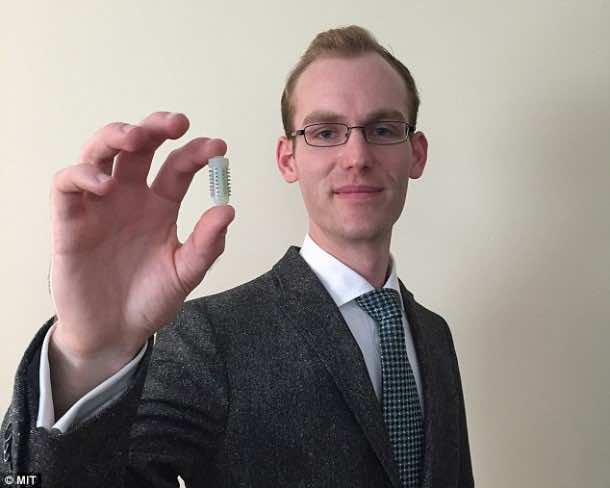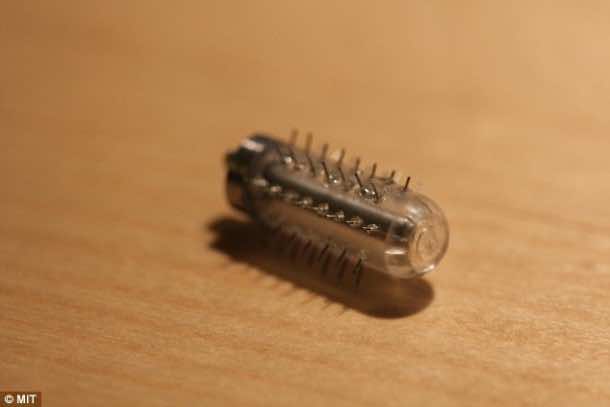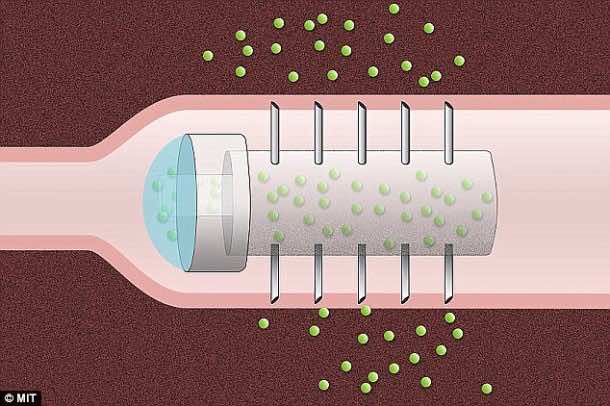Good news for all the aichmophobic people (fear of sharp objects) around the world as a futuristic mPill has been developed that will soon replace injections. But why are injections needed at all?

Administering medicine directly to the blood stream is the most efficient way of having the desired medical effect. But, consequentially, we have to get our skin pricked, and we can’t stand that! So, the mPill offers an alternative way of releasing the medicine directly into the bloodstream. It consists of an assortment of needles that contain the required drug. This needlework is then coated with a soluble coating that allows it to be taken as a pill. mPill not only offers an alternative way for drugs like insulin, it also makes the oral medicine work faster than injections!
The drug was developed by MIT’s grad student Carl Schoellhammer. More work is being done on this exciting invention, and it has recently secured a 15,000$ funding from the Lemelson-MIT program. The tablet is 2 cm long and 1 cm wide. It is filled with the medicine required by the patient, and it is swallowed as a whole. The micro-needles made up of stainless steel are indigestible and don’t affect the digestion track. The digestive track dissolves the coating and then squeezes out the drug due to its contracting actions.
Once the drug has been forced out of the pill, the remaining hollow steel thing will be passed out through the excretion system. No adverse effects have been found in this process. Since there are no pain nerves in the GI tract, the patient won’t feel a thing and his medication will be delivered right where it was wanted. The revolutionary pill will improve the administration of insulin and growth hormone deficiency drugs. Both of them require frequent injections every day, so that could be stopped and the treatment can be made more bearable and effective at the same time.
The design of the pill has been made to be similar to the size of medical ingestible devices like ingestible cameras. In an experimental procedure on pigs, the pill moved through the tract in a week, and no evidence of tissue damage was reported throughout the activity.
Schoellhammer says that he started developing the pill because injections are invasive procedures, they require skilled personnel and carry a risk of disease transmission. He is hopeful that the pill will be available for use in three to five years. He is also considering dropping the steel needles in favor of sugar ones. That could be great too. So, in a few years time, we could get rid of those inhumane pointy objects for good!




